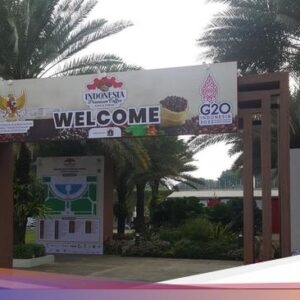Makassar – The coffee war in South Sulawesi (Sulsel) was not just between two local kingdoms. Coffee was also used as ‘war ammunition’ because it was a means of bartering for weapons.
Two kingdoms, namely the Luwuk Kingdom and the Sindenreng Kingdom, are fighting over black gold seeds in Tana Toraja. Because coffee, These two kingdoms attacked each other.
Also Read: In Keboen Kopi, you can take a walk to the coffee plantation to drink delicious coffee
ADVERTISEMENT
SCROLL TO CONTINUE WITH CONTENT
Around 1800, soldiers from the Luwuk kingdom prepared to attack the base of the Sindereng kingdom. At that time, the top officials of the Luwuk kingdom were upset because the coffee trade route in the Eastern region was quiet and buyers moved to the West belonging to the Sidenreng kingdom, specifically in the Mandandang area.
 Photo: iStock Photo: iStock |
Coffee brewer and owner of Warung Kopi Toraja, Sulaeman Miting, said that the attack failed. The Luwuk royal troops were successfully repulsed. However, to strengthen coffee control, the Luwuk kingdom connected with the Bone Kingdom.
“There is a relationship between the kingdoms of Luwu and Bone. And usually this marriage involves tribute, including coffee in it,” said Sulaeman.
Because of the marriage between two royal members, the Luwu kingdom asked for help from the army to invade the Sindereng kingdom again. Bone agreed to this request by sending Passongko Barong troops (red hat troops) at the end of 1800.
 Photo: iStock Photo: iStock |
As a result, the Sidenreng kingdom, which previously occupied the Mandandang area, was successfully repulsed.
Apart from this classic war, wars related to coffee also emerged in the Pongtiku era in the early 1900s. Pongtiku was one of Indonesia’s national heroes and came from Tana Toraja. He is said to have taken advantage of the high price of coffee to barter for weapons against the Dutch East Indies government. He is said to have survived because he controlled the coffee trade route.
Ashabul Kahpi from Imagined Historia Makassar said that coffee cultivation was introduced by the Dutch East Indies government in 1830 through the Cultuurstelsel program.
The spread of coffee cultivation during the Dutch East Indies era was divided into several districts and focused on highland areas with around 33 million trees. coffee. The North District is in the Bantaeng Regency area, the South District is Bulukumba and Sinjai, and the East District is in the Selayar Islands area.
 Photo: iStock Photo: iStock |
“The forced cultivation policy not only had an impact in Java and Sumatra but also in Sulawesi. Although the forced cultivation policy was not implemented absolutely in Sulawesi, coffee was introduced through cooperation between village heads,” explained Kahpi.
In the 19th century, coffee in South Sulawesi was said to be one of the biggest exports of the Dutch East Indies and exceeded rice production.
“Until 1872, around 33 million coffee trees were planted in South Sulawesi,” he said.
Also read: Has been around since 1927, this is the legendary iced milk coffee in Jakarta!
(sob/adr)






